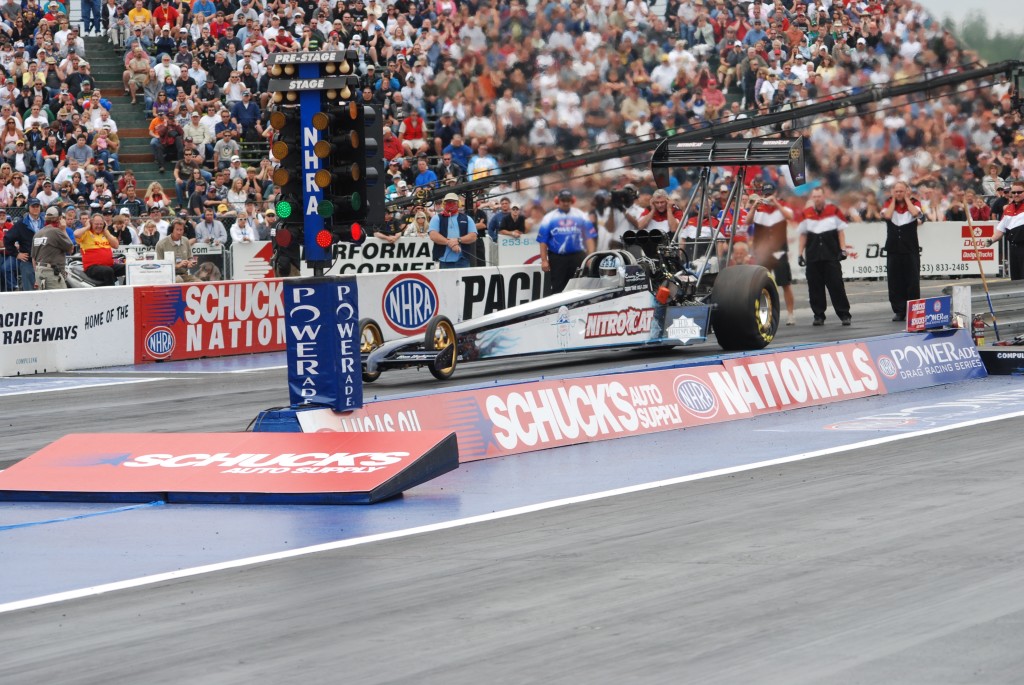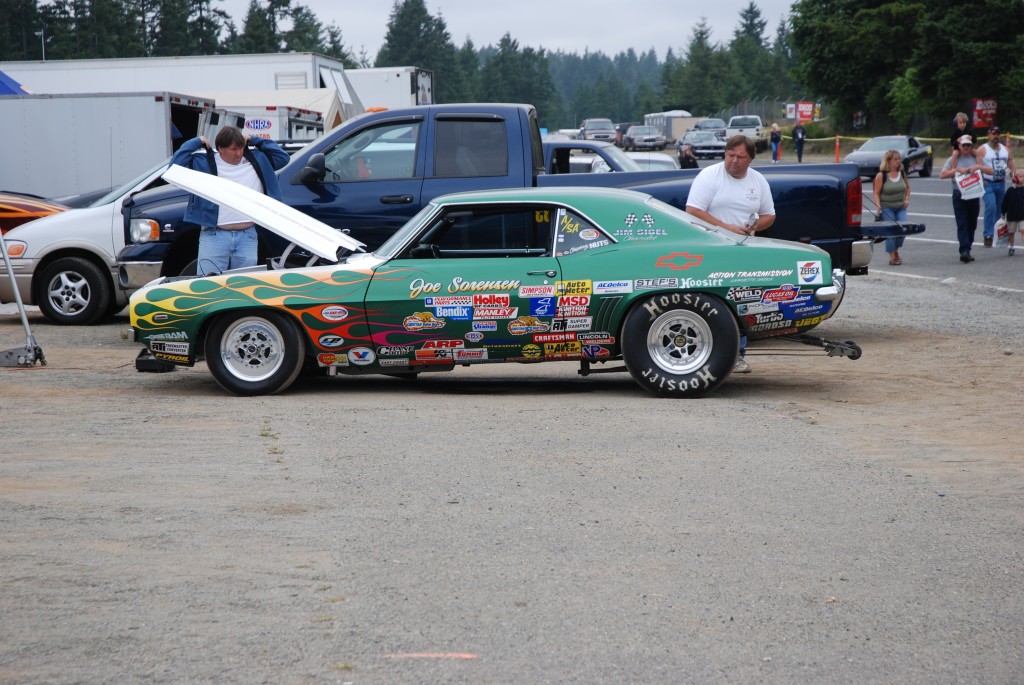

A couple of years ago, how to stage a car was addressed right here in the Drag Racing 101 section of The Burnout. Staging is really important. No secret, but did you know that “roll out” is intertwined and actually equally important? Roll out is a phrase constantly used in drag racing and even if you’re just an occasional racer, it’s a term that could save you countless red lights. At the same time, it can also improve the vehicle’s elapsed time. And it can also help if you’re late. Sound interesting? It is. But best of all, most roll out improvements are free of charge (or at the least, cheap).
How The System Works…
Let’s start at the beginning: Virtually all contemporary drag strips feature a pre-stage and a stage beam. Port-A-Tree’s Al Smyth points out the pre-stage beam is approximately seven inches before the stage beam – however this distance can change from track to track or, in some rare cases, may even change during the course of an event. Many tracks also have what is called a “guard beam”, which starts the ET clock if the stage beam does not. Smyth goes on to state: “The guard beam is 15-inches after the Stage beam (this is the start line). The 60 foot clock is 61-feet 3-inches from the stage beam. All downtrack dimensions are taken from the guard beam location.” To chart your progress as you “stage” your car, a set of corresponding lights are affixed to the Christmas tree. The pre-stage bulb tells the driver that his or her car is about to enter the stage beam – which in essence is the drag strip starting line. When the front tires of the car pass completely through the stage beam, the timers begin. If you start too soon, the evil red light comes on. And you go home early.
According to Jerry Bickel, “Increasing the roll out distance of a car gives the racer advantages that can make the difference between winning and losing. The added distance means that a little more time will elapse before the light beam reconnects. This makes it less likely that the driver will red light and the car gets a “running start” to cover the quarter mile. The length of the track is also shortened slightly by the increased roll out distance.
“On the down side, increasing the roll out distance of a car will also increase your recorded reaction times. However, if your reaction times are good, you should increase the roll out distance as much as the rules allow.” More on this topic later.
How Reaction Time & Roll Out Are Intertwined…
The folks at Port-A-Tree have done a considerable amount of research into roll out. After all, full size Christmas trees and practice trees are a big part of their business. Port-A-Tree points out: “Roll out is the ability of the car and the driver to react to the Christmas tree lights and to leave the starting line at a precise time.
“No matter what class, the driver with a better reaction time has a better chance of winning the race. Reaction time, as a number on the ET slip, measures the driver and the vehicle performance at the starting line. The driver reacts first, with a foot off the clutch, a finger off the transbrake button, or a foot off the brake pedal. The response to this action is the vehicle reaction time or roll out. Variable which influence reaction time include engine RPM, clutch or converter slippage, tire spin, engine performance, front tire diameter, suspension set up, staging techniques and any combination of the preceding.
“The movement of the tire out of the stage beam is what stops the reaction time clock and starts the ET clock. The stage beam must be blocked by the vehicle tire at the beginning of the tree sequence, and the beam must be un-blocked the instant the green light comes on”.
Fair enough, but how is rollout configured at the track? Port-A-Tree’s Al Smyth tells us: “Track personnel use a rollout wheel – 22-inches or 24-inches in diameter. They raise and lower the beams to make sure the rollout is equal in both lanes. In terms of height, the rollout for a 24-inch wheel is best when the beam is set at 12.75-inches. Without Christmas tree setup, we try to get the rollout within 1/16-inch between both lanes.”
Port-A-Tree also points out that there is a specific amount of time required for a conventional incandescent Christmas tree bulb setup to work. This is called “trigger time”, which equates to approximately 0.030-seconds on average. At night, this changes because the driver can actually see the filaments in an incandescent bulb heating up. With an LED Christmas tree bulb, then the trigger time is much less, however there still is a delay of sorts. There’s more, too: Port-A-Tree has also determined that the average driver reaction time is 0.140-seconds, plus or minus 0.020 seconds. This means that, in total, a driver requires 0.180 seconds, plus or minus 0.020 seconds to react to a given bulb on the tree. When this is taken into account the driver reaction time can, in fact, be taken out of the equation, leaving just the racecar, the burnout process and a few other items to influence overall reaction time.
That’s the basics. Next issue, we’ll look at reaction time and how you can work with mechanical bits, including rollout, to make it work in your favour. Watch for it.




Very informative, I’ve been racing for years and moved from CA to TX, NHRA to IHRA. For some reason I just can’t figure the roll out at my new home track. I race a 4 speed manual 69 vw bug with a 1.52 60 ft average. Been leaving off a line lock and thinking of going back to using e brake to hold car on the line, rt’ were much more consistent.